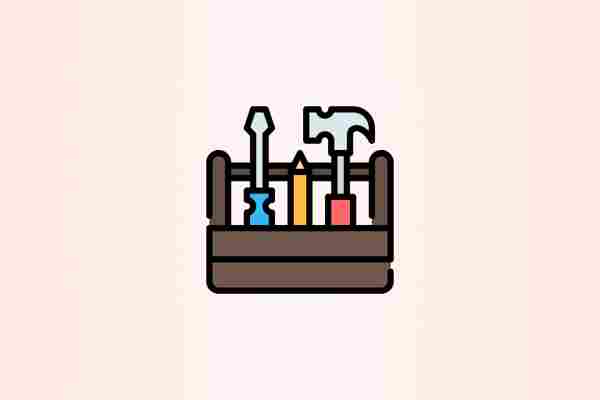Web development tools have come a long way since the dawn of the internet. For starters, we no longer need computers the size of refrigerators to build basic web pages.

Actually, thanks to the power of cloud computing (and a bevy of great SaaS businesses), we often don't even need a powerful computer at all. From the most basic web browser, you can do everything from edit Jquery to stream the latest video games.
But as the digital world evolves, so too has the role of a web developer. Modern web developers are jacks and jills of all trades, expected to know their way around UI and UX design, prototyping, wire-framing, SEO and much, much more.
This means it's a lot of work. It also means you need the right tools in your digital toolbox. This is why, in this post, we've curated a list of the 50 best web development tools to help you build the perfect tech stack for 2022.
When people speak about web development tools (or devtools in the biz), they're usually referring to the apps and software that allows web developers to test and debug the code and interface of a website or web application.
Technically, the term doesn't refer to tools that actually help you build a webpage or app. But that distinction isn't helpful. Web developers require a range of tools that go beyond debugging and testing—whether it be a remote collaboration tool like Slack, a design tool like Figma, or even just an online forum like StackOverflow.
For that reason, we've gone beyond the traditional definition of devtools with the aim of giving a realistic view of the kind of apps and software devs use in their day to day workflows. We think you'll find some familiar favourites, as well as some useful tools to add to your tech stack.
Whether you're bootstrapping a website from scratch or developing a simple web application, there are few things to keep in mind. Foremost is something that applies to any tool: pick the right option for your specific needs.
What works for one project might not work for the next. As a web developer, you constantly need to investigate new tools and ways of doing things. Of course, we all have our favourites, but as a general rule, your tech stack should never be stagnant.
There's one other general principle to keep in mind. Tech should simplify your workflow—not complicate it. We know how easy it is to get bogged down in the nerdy details, but when in doubt, ask yourself: does this tool actually make my job easier?
Here are a few things to think about beyond these broader considerations:
Functionality: Simply, what does each tool help achieve? Does it have a single purpose and can it be replaced by a more feature-rich option?
Ease of use: Ensure that the tools that you have control over balance comprehensive features with actually being useable.
Scalability: At least some of the tools that you use should be scalable to both small and large projects.
Portability: This may not be a gamechanger in the age of remote work, but often web devs travel between clients, the office, home and the local cafe.
Customisation: Whether it's a theme on Google Chrome or an add-on for your development environment, we all like to make tools feel unique to us.
Security: The security of users, your employer and the sites or apps you are working on always has to be looked after.
Cost: If you work for a fancy startup with cash to splash this may not be an issue, but most folks will have to shell out for their own web development tools. Make sure you are getting bang for your buck.
A Note On Web Dev Tech Stacks
Web development is an all-encompassing term that refers to a bunch of roles. You can split web development into two parts: client-side and server-side.
Client-side Otherwise known as front-end web development, this refers to anything a user can see or engage with—an app or website are good examples. This is about providing a top-notch user experience and smooth interface (usually with a combination of HTML, CSS and various JavaScript libraries. Server-side Otherwise known as back-end web development, this refers to the stuff behind the scenes of apps and websites that users can't see. It's the frameworks, servers and databases that keep things running.
Most of the time, web developers specialise in one of the two. However, there are a few show-offs that can do both—they’re referred to as full-stack developers.
The term stack is used because the tools that websites and apps use 'stack' on top of each other to build the final product.
Check out this example of Paperform's tech stack for example.
Alright, as we Antipodeans say, no more beating around the bush. Let's get into the list of the best web development tools we recommend using in 2022.

